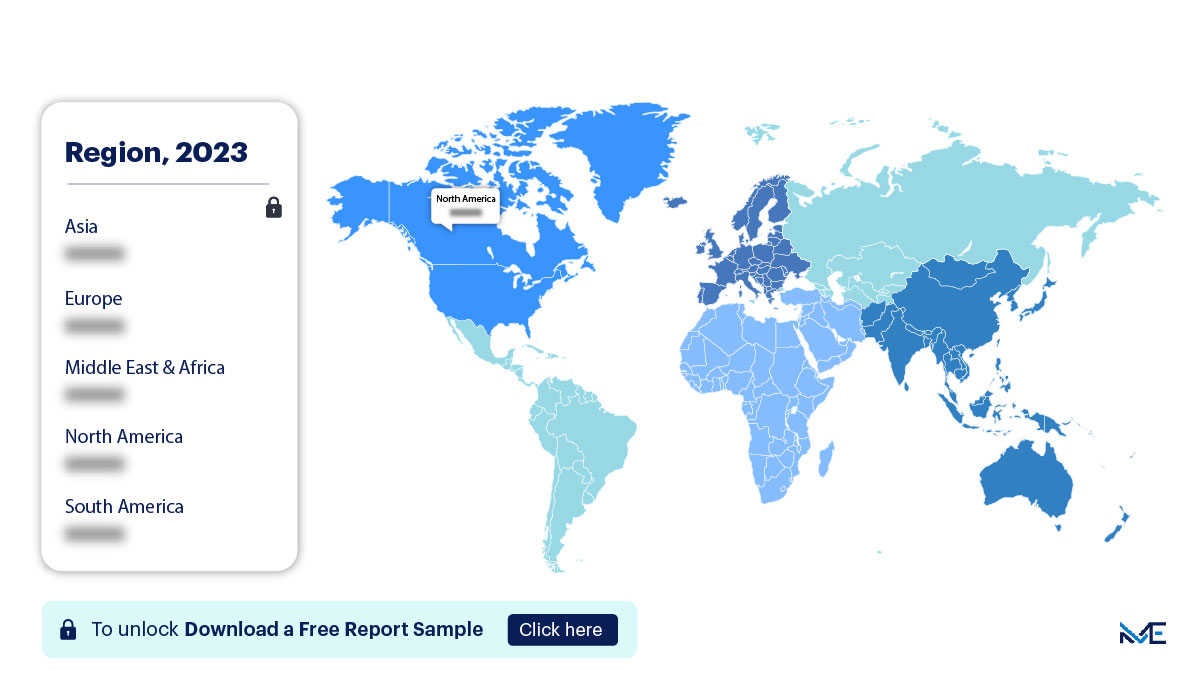Market Snapshot
| Study Period | 2019-2032 |
| Base Year | 2023 |
| Forcast Year | 2023-2032 |
| CAGR | 9.21 |


Gain accurate insights regarding the negative impacts of COVID-19 on all markets and industries
Download Sample PdfReport Overview
The ICT (Information and Communication Technology) Investment in Government market is poised for significant growth, with an estimated CAGR of 5.2% between 2022 and 2032. The market size is forecast to increase by USD 25,645.78 million. This growth is driven by various factors, including the increasing adoption of digital governance initiatives, the need for efficient public service delivery, and the ongoing modernization of government IT infrastructure. ICT investment in government refers to the allocation of resources to acquire, implement, and maintain information and communication technology solutions to enhance government operations, service delivery, and citizen engagement.
ICT Investment in Government Market Overview:
Drivers:
One of the primary drivers of growth in the ICT Investment in Government market is the rising demand for digital governance solutions. Governments worldwide are recognizing the importance of leveraging technology to streamline administrative processes, improve transparency, and enhance citizen services. Digital governance initiatives encompass a wide range of ICT investments, including e-government platforms, digital identity systems, and data analytics tools, all aimed at delivering more efficient and citizen-centric services.
Additionally, the need for secure and resilient government IT infrastructure has become paramount in the face of increasing cyber threats. This has led to substantial investments in cybersecurity solutions, including threat detection, encryption, and security analytics, to safeguard government data and citizen information.
Trends:
A significant trend shaping the ICT Investment in Government market is the integration of artificial intelligence (AI) and data analytics in government operations. Governments are increasingly adopting AI-driven solutions to automate routine tasks, analyze large datasets for informed decision-making, and enhance citizen interactions through chatbots and virtual assistants. This trend is driven by the desire to improve operational efficiency and provide more personalized services to citizens.
Furthermore, the COVID-19 pandemic has accelerated the adoption of remote work and telehealth solutions in the public sector. Governments have invested in telecommunication infrastructure, collaboration tools, and telemedicine platforms to ensure continuity of services during lockdowns and social distancing measures. These investments are expected to continue driving growth in the market.
Restraints:
One of the challenges facing the ICT Investment in Government market is the complexity of large-scale IT projects within government agencies. Government projects often involve multiple stakeholders, lengthy procurement processes, and complex regulatory requirements, which can lead to project delays and cost overruns. Overcoming these challenges requires effective project management and collaboration between governments and technology vendors.
Moreover, data privacy and security concerns are prominent obstacles, particularly when implementing citizen-centric digital services. Governments must navigate the balance between convenience and privacy, leading to careful consideration of data protection regulations and cybersecurity measures.
ICT Investment in Government Market Segmentation By Application:
The e-government segment is expected to witness significant growth during the forecast period. E-government initiatives involve the digitization of government services, including online portals for citizen interactions, electronic tax filing, and digital document management. These investments aim to simplify administrative processes, reduce paperwork, and enhance citizen access to government services.
Additionally, investments in digital identity solutions and secure authentication methods are crucial components of e-government projects. Digital identity systems improve security and enable citizens to access government services seamlessly, further driving growth in this segment.
ICT Investment in Government Market Segmentation By Type:
The cybersecurity segment is experiencing robust growth due to the increasing importance of protecting government data and critical infrastructure. Government agencies are allocating significant resources to safeguard against cyber threats, including state-sponsored attacks, ransomware, and data breaches. Investments in advanced cybersecurity solutions, such as next-generation firewalls, endpoint detection and response (EDR) systems, and security information and event management (SIEM) tools, are driving growth in this segment.
Regional Overview:

Download the report summary now!
Request pdf Sample
North America is expected to be a major contributor to the global ICT Investment in Government market, accounting for 38% of market growth during the forecast period. The region is characterized by advanced government IT infrastructure and a strong emphasis on digital transformation. Key drivers include the United States' investments in digital government initiatives, cybersecurity enhancements, and telehealth services.
In Europe, the United Kingdom and Germany are leading in ICT investment in government, focusing on e-government solutions, smart city projects, and data-driven decision-making. The European market benefits from collaborative efforts between government agencies and technology vendors.
Asia-Pacific (APAC) is a rapidly growing market for ICT investment in government, with countries like China and India making substantial investments in digital governance and smart city development. The region's large population and increasing internet penetration drive the adoption of e-government services and telehealth solutions.
ICT Investment in Government Market Customer Landscape:
The ICT Investment in Government market report includes an analysis of the customer landscape, ranging from early adopters of digital government solutions to those at the lagging stage. It evaluates adoption rates in different regions based on technology penetration and government policies. Additionally, the report explores key criteria that influence government procurement decisions and factors driving cost sensitivity.
Major ICT Investment in Government Market Companies:
Leading companies in the ICT Investment in Government market are employing various strategies, such as forming strategic partnerships, acquiring specialized technology firms, expanding their geographical footprint, and launching innovative solutions. Some prominent companies in the market include:
-
IBM Corporation: Offers a wide range of digital government solutions, including data analytics, cloud computing, and cybersecurity services.
-
Microsoft Corporation: Provides government-focused cloud computing services through Azure Government and offers collaboration tools for public sector organizations.
-
Cisco Systems, Inc.: Offers networking and security solutions tailored to government agencies, including secure communication and data protection.
The research report also includes detailed analyses of the competitive landscape of the market and information about 10 market companies, including:
- Adobe Inc.
- Salesforce.com, Inc.
- Intel Corporation
- Huawei Technologies Co., Ltd.
- Fujitsu Limited
- NEC Corporation
- Ericsson AB
- Nokia Corporation
- Hitachi, Ltd.
- Samsung Electronics Co., Ltd.
The competitive landscape analysis includes detailed assessments of these companies, evaluating their market positioning, strengths, and weaknesses.
Segment Overview:
The ICT Investment in Government market report provides revenue forecasts at the global, regional, and country levels, along with an analysis of emerging trends and growth opportunities spanning from 2019 to 2032.
-
Application Outlook (USD Million, 2019 - 2032):
- E-government
- Cybersecurity
- Telehealth
- Data Analytics
- Others
-
Type Outlook (USD Million, 2019 - 2032):
- Cloud Computing
- AI and Machine Learning
- Blockchain
- Big Data and Analytics
- IoT (Internet of Things)
-
Geography Outlook (USD Million, 2019 - 2032):
- North America
- The United States
- Canada
- Europe
- United Kingdom
- Germany
- France
- Rest of Europe
- APAC
- China
- India
- South America
- Brazil
- Argentina
- Chile
- Middle East & Africa
- Saudi Arabia
- South Africa
- Rest of the Middle East & Africa
- North America
Key Benefits for Stakeholders
- Comprehensive Market Analysis- The study meticulously segments the market based on both economic and non-economic criteria, conducting both qualitative and quantitative analyses. This rigorous approach offers a deep understanding of various market segments and sub-segments.
- Accurate Market Valuation- Precise market values in USD Billion are furnished for each segment and sub-segment, facilitating stakeholders in making precise assessments of market opportunities.
- Identification of Growth Prospects- The report pinpoints regions and market segments poised for rapid expansion, as well as those with substantial market share potential. This assists stakeholders in making well-informed strategic decisions.
- Insightful Regional Analysis- The research explores regional factors influencing the market and scrutinizes product or service utilization in diverse geographical areas, enhancing comprehension of regional dynamics.
- Comprehensive Competitive Insight- The report encompasses critical data, including market share of leading players, recent service/product launches, collaborations, expansions, and acquisitions made by profiled companies in the last five years. This provides a holistic view of the competitive landscape.
- Detailed Company Profiles- In-depth profiles of key market participants encompass company overviews, business insights, product benchmarking, and SWOT analyses. This equips stakeholders with the means to evaluate the strengths and weaknesses of these entities.
- Future Market Outlook- The research furnishes an industry perspective on the present and future based on recent developments, enabling stakeholders to anticipate market trends and forthcoming changes.
- Thorough Market Examination- Porter’s five forces analysis is employed in the study to provide a comprehensive examination of the market from multiple angles, including competitive forces and market dynamics.
- Value Chain Insights- The research leverages the Value Chain concept to elucidate the market, offering insights into how products or services traverse the market ecosystem.
- Market Dynamics and Growth Prospects- The study presents current market dynamics and growth prospects for the foreseeable future, empowering stakeholders with invaluable information for strategic decision-making.
RESEARCH METHODOLOGY
A research methodology is a systematic approach for assessing or conducting a market study. Researchers tend to draw on a variety of both qualitative and quantitative study methods, inclusive of investigations, survey, secondary data and market observation.
Such plans can focus on classifying the products offered by leading market players or simply use statistical models to interpret observations or test hypotheses. While some methods aim for a detailed description of the factors behind an observation, others present the context of the current market scenario.
Now let’s take a closer look at the research methods here.
Secondary Research Model
Extensive data is obtained and cumulated on a substantial basis during the inception phase of the research process. The data accumulated is consistently filtered through validation from the in-house database, paid sources as well reputable industry magazines. A robust research study requires an understanding of the overall value chain. Annual reports and financials of industry players are studied thoroughly to have a comprehensive idea of the market taxonomy.
Primary Insights
Post conglomeration of the data obtained through secondary research; a validation process is initiated to verify the numbers or figures. This process is usually performed by having a detailed discussion with the industry experts.
However, we do not restrict our primary interviews only to the industry leaders. Our team covers the entire value chain while verifying the data. A significant number of raw material suppliers, local manufacturers, distributors, and stakeholders are interviewed to make our findings authentic. The current trends which include the drivers, restraints, and opportunities are also derived through the primary research process.
Market Estimation
The market estimation is conducted by analyzing the data collected through both secondary and primary research. This process involves market breakdown, bottom-up and top- down approach.
Moreover, while forecasting the market a comprehensive statistical time series model is designed for each market. Macroeconomic indicators are considered to understand the current trends of the market. Each data point is verified by the process of data triangulation method to arrive at the final market estimates.
Final Presentation
The penultimate process results in a holistic research report. The study equips key industry players to undertake significant strategic decisions through the findings. The report encompasses detailed market information. Graphical representations of the current market trends are also made available in order to make the study highly comprehensible for the reader.
Personalized Business Report Tailored to Your Requirements
- Our expert analysts collaborate directly with you to comprehend your specific needs.
- Get data on regions, segments, competitors, and vendors of your choice.
- Information is presented in alignment with your exact preferences and formatting.
Free Sample Report
"Find new revenue generation opportunities"

